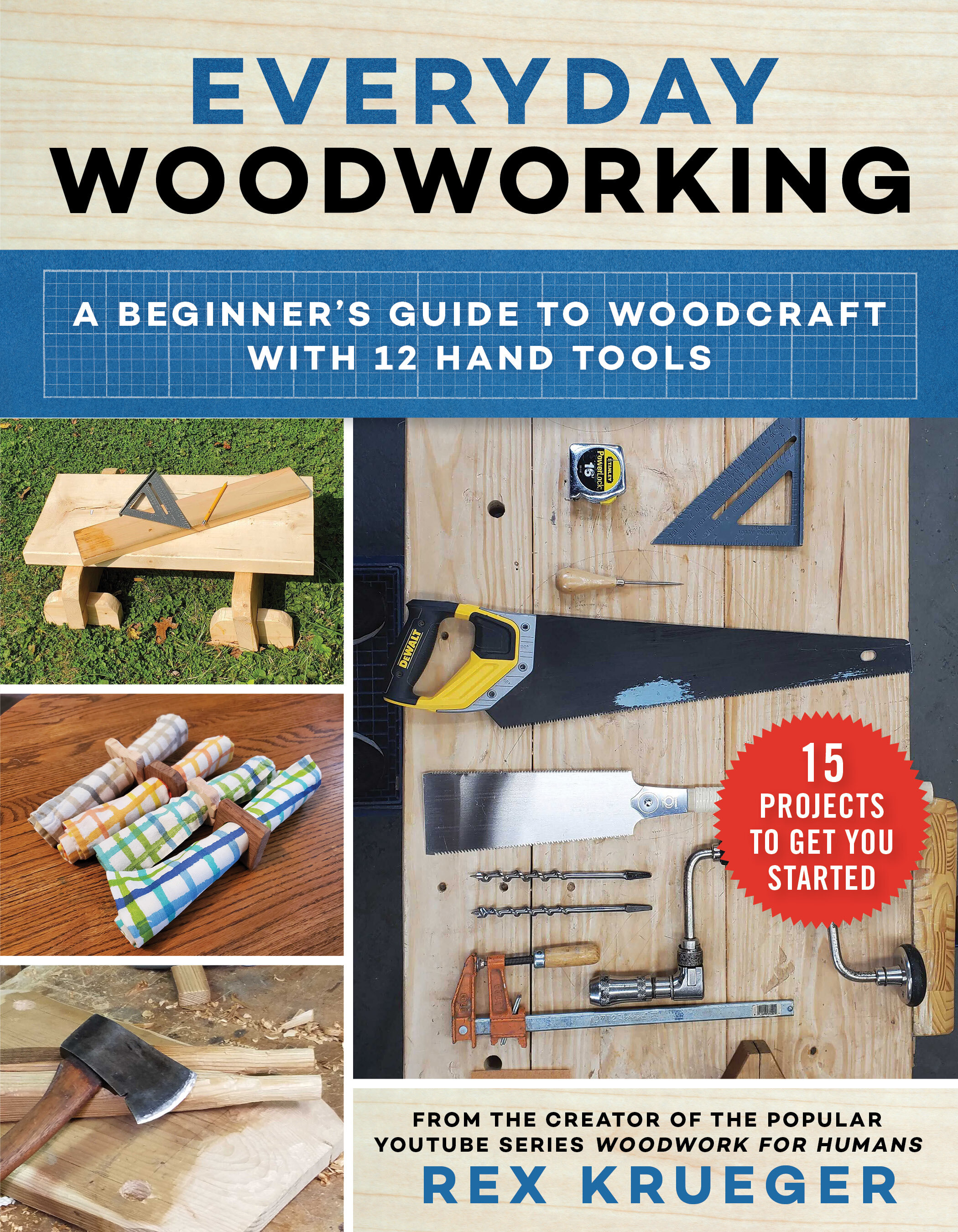The REAL Woodworking Starter Kit
June 23rd, 2021
The REAL Woodworking Starter Kit
There’s a kind of video on YouTube. There are dozens of versions. Each one promises that you can “Get Started Woodworking for Less Than $1000!” or the title proclaims: “Start Woodworking: 5 Tools You NEED.”
I hate these videos.
For a second, let’s ignore the fact that $1000 is a fantastic sum of money. Let’s ignore the fact that hardly anyone can cough up that much cash to just get started on a hobby. Instead, let’s focus on the fact that none of the tools in these videos are necessary.
None of them.
Most of these videos focus on power saws. They tell you that a table saw and a miter saw are essential. They might cover alternatives like a track saw or inexpensive circular saw, but none of them tell you that you don’t need ANY electric saws to get started. You also don’t need a cordless drill, a router, a drill press, or an electric lathe. All of these tools are expensive and many of them are dangerous. They all produce dust that you really don’t want to breathe and they take up a lot of space. The idea that you need these things just to get started is absurd.
Of course, this is a lot of big talk from me. If I don’t think you need to buy all the plug-in tools, if I think it’s crazy to ask people to spend that much money, then I better have an alternative. I better have an effective, inexpensive and safer way to get started. And it turns out, I do. And I just wrote a whole book about it.
My new book. Get your autographed copy here.
hereThe book is based on a simple idea: take a person with no tools and no woodworking experience and get them learning the craft as quickly, safely, and cheaply as possible. By the end of the book, even a raw beginner should be making real, useful projects. If it sounds crazy, it shouldn’t. It’s completely possible.
Start Simple
I begin my book with two tools: a hatchet and a knife. These tools (an edge and a wedge) will teach you the structure of wood and how to cut it efficiently. With a hatchet, you can split wood and learn its grain. You can chop and remove waste efficiently. You can even pare with surprising precision. With a knife, you can carve, whittle, and slice. Even an inexpensive knife will let you shape wood and leave a smooth finish.
I can already hear some people scoffing at these two basic tools, but these “basic” tools can teach you everything about wood grain. If you want to make things out of wood, what’s more important than understanding the grain?
Build Your Skills
After you learn the hatchet and the knife, we move on to sawing, drilling, and the marking and measuring skills that make these tasks accurate and precise. You’ll learn to buy a saw, select a drill bit, and use a square.
The book has a simple structure. First, you build some background information, like how to pick wood or sharpen a cutting edge, then you learn a tool, then you do a project. Each section of the book starts with information and then continues on to tool use and practice. Along the way, you’ll make all sorts of things that you’ll actually use.
Bootstrap Your Shop
I know that beginners don’t have shops. Some people don’t even have an old table to use as a first workbench. That’s no problem. I’ve designed a set of workholding solutions that will take you all the way from the ground up to your first workbench.
These Japanese sawhorses are easy to build and extremely effective.
We’ll begin with a simple set of Japanese sawhorses. You can build these with a handful of tools and a scrap of construction lumber. With your sawhorses completed, you can get your work up off the ground and saw with confidence. Then, we’ll move on to a chopping block made from a piece of tree trunk and a couple of legs. With this elevated platform, we can chop, trim, and pound on our work on a convenient, waist-high surface. Finally, you’ll build a low workbench, like carpenters all around the world have been using for centuries. This low bench is compact and easy to store and you can make it from a pair of softwood boards available at any home center. Once you’ve built the saw horses, the chopping block, and the low bench, you’ll have a flexible and compact workspace that you can set up anywhere: a basement or a backyard.
Finish with Real Projects
As you progress through the book, you’ll learn some basic furniture joints and start making real things for your shop and home. We’ll make a stout mallet, a desk organizer for your office, a milking stool for your home or your shop, and several other useful objects made with simple tools and inexpensive wood. By the end of the book, you’ll have a whole stack of things you made, and you won’t need a single power saw to do any of them.
This tool-tote is big enough to hold all the tools you need to get started.
If you’d like to get your copy of Everyday Woodworking, we have a limited number of autographed editions still available, but they won’t last long.
You can also order the book on Amazon, or anywhere you get books. The book might be back-ordered in some places, but please order it anyway. Having more orders will convince my publisher to run a second printing as quickly as possible and everyone can get their book faster.
And if you’ve already bought the book, thanks so much for your support!





